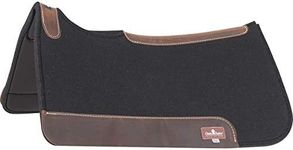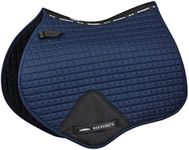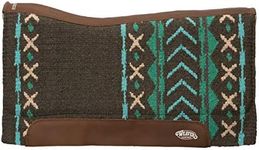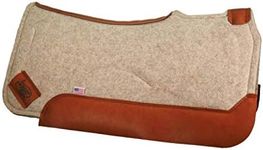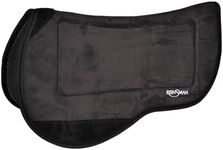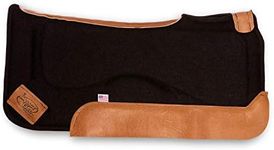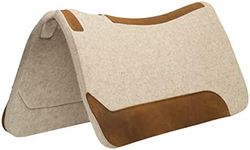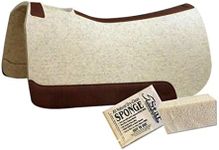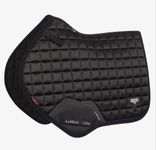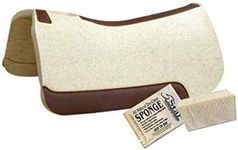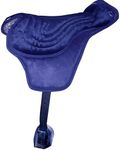Buying Guide for the Best Horse Saddle Pads
Choosing the right horse saddle pad is crucial for the comfort and performance of both the horse and the rider. A good saddle pad can help distribute the weight evenly, prevent sores, and provide cushioning. When selecting a saddle pad, it's important to consider several key specifications to ensure it meets your needs and the needs of your horse.MaterialThe material of the saddle pad is important because it affects comfort, durability, and breathability. Common materials include wool, cotton, and synthetic fabrics. Wool is known for its excellent moisture-wicking properties and durability, making it ideal for long rides. Cotton is breathable and easy to clean, suitable for everyday use. Synthetic materials are often lightweight and can offer good cushioning, but may not be as breathable. Choose a material based on the climate you ride in and how often you ride.
ThicknessThe thickness of a saddle pad can impact the level of cushioning and support it provides. Thicker pads offer more cushioning, which can be beneficial for horses with sensitive backs or for long rides. However, they can also add bulk and may affect the fit of the saddle. Thinner pads are less bulky and can provide a closer contact feel, which some riders prefer for better communication with their horse. Consider the type of riding you do and your horse's needs when choosing the thickness.
Shape and SizeSaddle pads come in various shapes and sizes to fit different types of saddles and horses. The shape should match the type of saddle you use, such as English, Western, or dressage. The size should be appropriate for your horse's back, ensuring it covers the area under the saddle without being too large or too small. A properly fitting pad will prevent shifting and provide even pressure distribution. Measure your saddle and your horse's back to find the right size and shape.
Padding and SupportThe level of padding and support in a saddle pad can affect your horse's comfort and performance. Some pads have additional padding in specific areas to provide extra support where it's needed most. Gel inserts, memory foam, and other advanced materials can offer enhanced shock absorption and pressure relief. If your horse has specific issues like back pain or saddle fit problems, look for pads with targeted support features. Assess your horse's needs and any existing issues to determine the right level of padding and support.
BreathabilityBreathability is important to keep your horse cool and comfortable, especially during long rides or in hot weather. A breathable saddle pad allows air to circulate, reducing the risk of overheating and moisture buildup. Materials like wool and certain synthetic fabrics are known for their breathability. If you ride in warm climates or your horse tends to sweat a lot, prioritize a saddle pad with good breathability to ensure your horse stays comfortable.
MaintenanceThe ease of maintenance is an important consideration when choosing a saddle pad. Some materials are machine washable, while others may require hand washing or special care. Regular cleaning is essential to prevent the buildup of dirt, sweat, and bacteria, which can cause discomfort and skin issues for your horse. Consider how much time and effort you are willing to invest in maintaining the saddle pad and choose one that fits your lifestyle and maintenance preferences.

